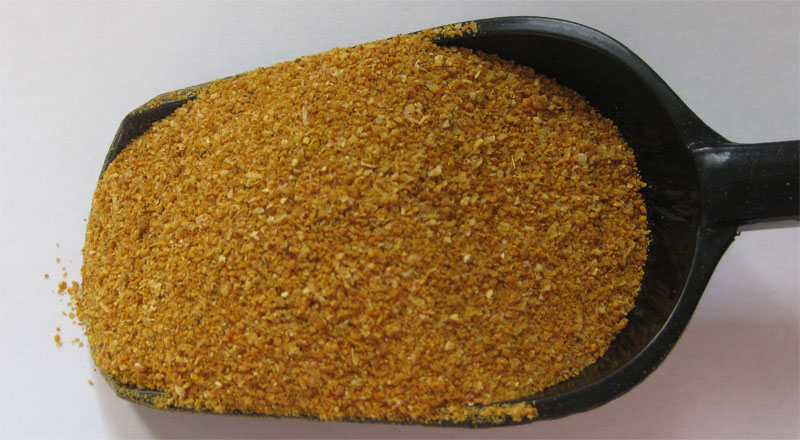China
has announced to remove VAT for DDGS imports from the USA but keeps
anti-dumping and anti-subsidy taxes. This step will likely encourage China’s
imports again and keeps the trade relation of feed ingredients between the USA
and China fluctuating.
When
China’s President Xi Jinping and the American Potus Donald Trump had talks in
Beijing, good news has been revealed for exporters of distillers dried grains
with solubles (DDGS) into the middle kingdom. The two state representatives
announced that China removes the value-added tax (VAT) for DDGS imports from
the USA.

Distiller’s
dried grains with solubles (DDGS) are the nutrient-rich co-product of
dry-milled ethanol production. Its utilization as a feed ingredient is well
documented as both an energy and a protein supplement. China’s demand for this
comparable cheap feed ingredient is growing steadily, as the country needs to
respond to the growing meat consume of a wealthier middle class.
The
current VAT tax on DDGS is 11%. Rumors had it, that China wanted to remove the
tax for the high-protein animal feed sometime before, independent of the
meeting with Trump and Xi.
The
USA, as the main exporter of DDGS to China, will benefit partly from the lifted
ban but is still facing anti-dumping tariffs, which are not going to be lifted
together with the VAT.
As
a result, for many exporters and traders from the USA, the step is not reaching
far enough. Since most of the import duty remains due to anti-dumping, market
participants are calling for a reduction by at least half of the tax, according
to Reuters.
In
January 2017, Beijing has set anti-dumping duties on DDGS imports from the
United States of up to 53.7 percent. Anti-subsidy tariffs, on the other hand,
range between 11.2 percent and 12 percent.
As
a result of the import duties, domestic DDGS in China is around USD10 per tonne
cheaper than the imported counterpart from the USA, which has caused a
significant loss of market share and interfered the business relations between
American exporters and Chinese buyers, which have been build in the recent
years.
Furthermore,
it is still uncertain when the exemption will be implemented, so the Chinese
DDGS market is likely to stay largely unaffected by the announcement in the
short term.
China’s up and downs in
importing DDGS from the USA
China
used to be the largest buyer of US DDGS by 2015, but in September 2016 an
imposed preliminary 33.8% antidumping duty on US DDGS changed the market. It
then announced a preliminary anti-subsidy tariff of 10-10.7%. China announced
its final rule in January 2017, increasing its anti-dumping duties to
42.2-53.7% and anti-subsidy duties to 11.2-12%.
As
a result of the import duties and resulting loss of market share, the price of
DDGS in the USA has dropped significantly.
China
started to import DDGS in 2008, but for many years import volumes experienced
ups and downs due to governmental policies.
In
the year 2010, China has imported more than 3.1 million tonnes of DDGS, which
was falling already in 2011 to less than 1.7 million tonnes. This was the
year when the first anti-dumping investigation against American exporters
was initiated by the government. 2015 was the peak of Chinese DDGS imports with
6.8 million tonnes, elevated by the fact that no anti-dumping duties had been
set after the first investigation in 2011. With the setting of new anti-dumping
and anti-subsidy duties in 2016, the import volume fell by more than half to
about 3 million tonnes. In 2017, the government even increased the anti-dumping
taxes which pushed the import volume down by 86% year on year.
China
was the fifth largest importer of DDGS from the USA, accounting for around 7%
of the States total exports in 2016-2017. Other major DDGS importers are
Mexico, Turkey, Korea, and Thailand. Before the heavy import duties,
The
People’s Republic used to be the leading importer of DDGS from the USA, before
the heavy import-taxes in
DDGS development in
China
According
to market intelligence firm CCM, domestic DDGS still enjoys a price advantage,
and the import volume in 2017/18 will be around 800,000 tonnes–1 million
tonnes, which won’t significantly rise. The domestic DDGS market, thanks to the
national fuel ethanol policy, is seeing a large rise in capacity and still
looks promising. It is estimated that output in 2017-18 will amount to 4.50
million tonnes.
In
addition, new corn is now collectively flowing into the market in Northeast
China, and supply in Jilin and Heilongjiang provinces is sufficient.
About CCM
CCM
is the leading market intelligence provider for China’s agriculture, chemicals,
food & ingredients and life science markets.
Do
you want to find out more about the DDGS market in China? Try our Newsletters and Industrial Reports or join our professional online platform today and get
insights in Reports, Newsletter, and Market Data at one place.